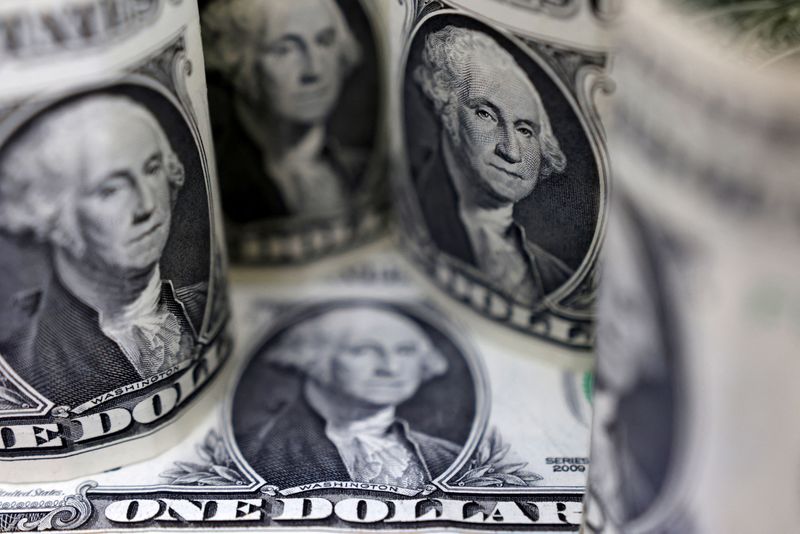- Gold extends gains for a third week, rising 0.51% to $2,422.
- Fed Chair Powell’s cautious comments on inflation and rate cuts subtly influence market sentiment.
- US Treasury yields increase, with the 10-year note up four basis points to 4.227%, amid expectations for a September rate cut.
Gold price advanced on Monday after achieving three weeks of consecutive gains, yet exchanges hands off daily high after the Federal Reserve Chairman Jerome Powell stuck to its rhetoric, failing to provide forward guidance. The XAU/USD trades at $2,422, up by 0.51%.
The yellow metal opened Monday’s session slightly lower following Trump’s assassination attack over the weekend, which bolstered his chances of winning November’s election. This boosted the Greenback, though worries faded, and the XAU/USD resumed its bullish trend, lifting Gold prices towards a multi-week high of $2,439.
In the meantime, Fed Chair Jerome Powell’s appearance at The Economic Club of Economic Club was uneventful. He said the economy has performed “remarkably well” and added the labor market isn’t as tight as in the pandemic.
Powell added that the Fed will not wait until inflation reaches 2% to cut rates, though policymakers want to be confident that inflation is moving down.
Following Powell’s remarks, US Treasury bond yields edged higher in the belly and the long end of the curve. The US 10-year Treasury note is up four basis points (bps) at 4.227%.
According to the CME FedWatch Tool, traders are pricing a 98% chance that the Fed might cut rates a quarter of a percentage point in September.
Daily digest market movers: Gold price consolidates above $2,400
- Weaker than expected US Consumer Price Index (CPI) data, sponsored Gold’s leg-up above $2,400 as odds for Fed rate cuts increase as reflected by falling US Treasury bond yields.
- The US economic docket will feature Retail Sales, housing data, Initial Jobless Claims, and further Federal Reserve speakers.
- Meanwhile, the US Dollar Index (DXY), which tracks the Greenback against a basket of six currencies, is up more than 0.13% to 104.21.
- December 2024 fed funds rate futures contract implies that the Fed will ease policy by 53 basis points (bps) toward the end of the year, up from 50 last Friday.
- Bullion prices retreated slightly due to the People’s Bank of China (PBoC) decision to halt gold purchases in June, as it did in May. By the end of June, China held 72.80 million troy ounces of the precious metal.
Technical analysis: Gold price remains bullish, despite buyers taking a respite
Gold price remains above $2,400, posting gains of a half-percent yet failing to remain near daily highs of $2,439. Momentum remains bullish, but near-term hints that buyers are taking a breather, as depicted by the Relative Strength Index (RSI) standing flat but bullish.
If XAU/USD edges above $2,439, that would pave the way to test the year-to-date (YTD) high of $2,450. Further gains are seen once cleared, with the $2,500 figure up next. Otherwise, if XAU/USD slumps below $2,400, the next floor will be the July 5 high at $2,392. If cleared, XAU/USD would continue to $2,350.
Gold FAQs
Gold has played a key role in human’s history as it has been widely used as a store of value and medium of exchange. Currently, apart from its shine and usage for jewelry, the precious metal is widely seen as a safe-haven asset, meaning that it is considered a good investment during turbulent times. Gold is also widely seen as a hedge against inflation and against depreciating currencies as it doesn’t rely on any specific issuer or government.
Central banks are the biggest Gold holders. In their aim to support their currencies in turbulent times, central banks tend to diversify their reserves and buy Gold to improve the perceived strength of the economy and the currency. High Gold reserves can be a source of trust for a country’s solvency. Central banks added 1,136 tonnes of Gold worth around $70 billion to their reserves in 2022, according to data from the World Gold Council. This is the highest yearly purchase since records began. Central banks from emerging economies such as China, India and Turkey are quickly increasing their Gold reserves.
Gold has an inverse correlation with the US Dollar and US Treasuries, which are both major reserve and safe-haven assets. When the Dollar depreciates, Gold tends to rise, enabling investors and central banks to diversify their assets in turbulent times. Gold is also inversely correlated with risk assets. A rally in the stock market tends to weaken Gold price, while sell-offs in riskier markets tend to favor the precious metal.
The price can move due to a wide range of factors. Geopolitical instability or fears of a deep recession can quickly make Gold price escalate due to its safe-haven status. As a yield-less asset, Gold tends to rise with lower interest rates, while higher cost of money usually weighs down on the yellow metal. Still, most moves depend on how the US Dollar (USD) behaves as the asset is priced in dollars (XAU/USD). A strong Dollar tends to keep the price of Gold controlled, whereas a weaker Dollar is likely to push Gold prices up.













